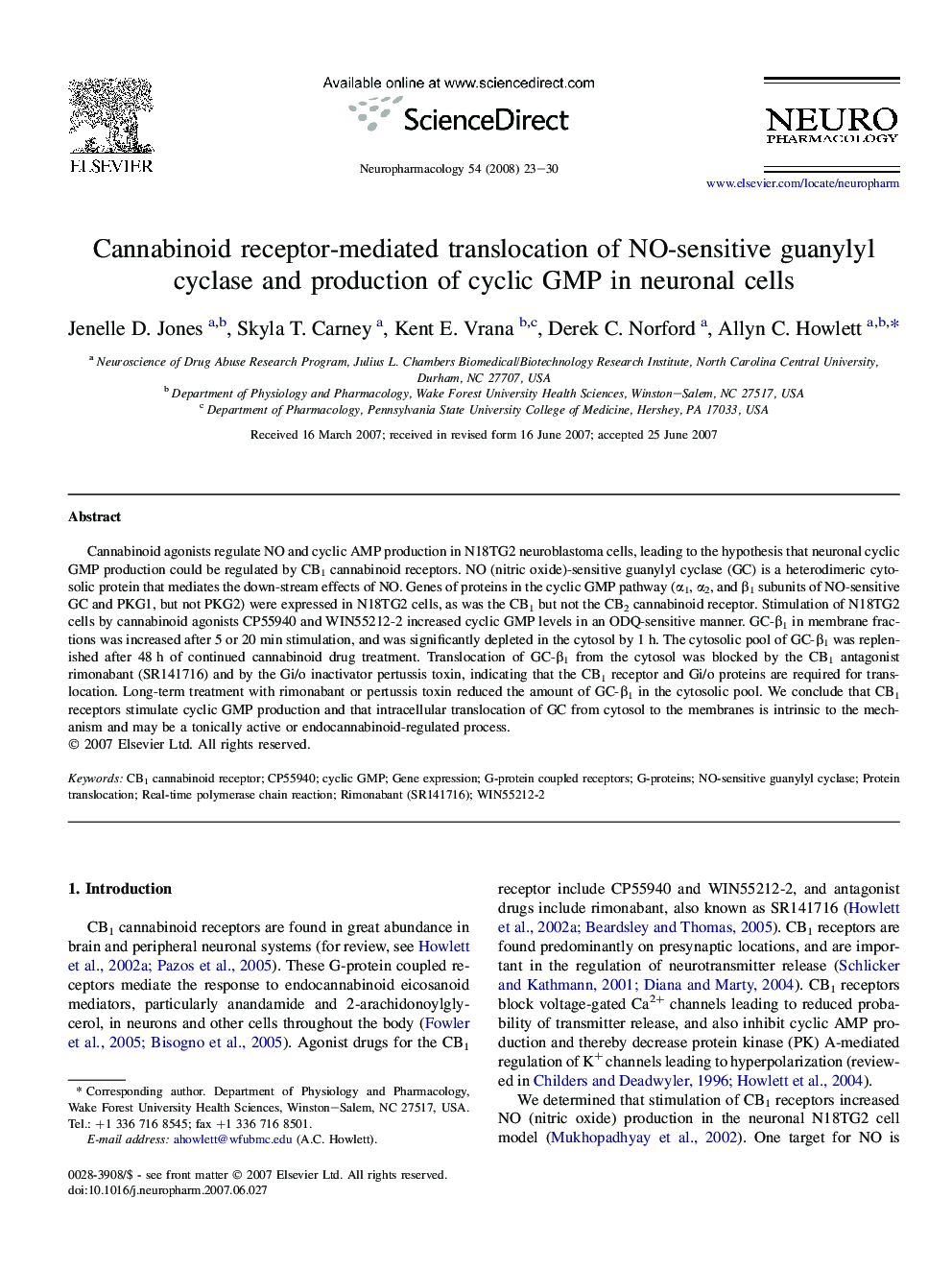| Article ID | Journal | Published Year | Pages | File Type |
|---|---|---|---|---|
| 5816233 | Neuropharmacology | 2008 | 8 Pages |
Abstract
Cannabinoid agonists regulate NO and cyclic AMP production in N18TG2 neuroblastoma cells, leading to the hypothesis that neuronal cyclic GMP production could be regulated by CB1 cannabinoid receptors. NO (nitric oxide)-sensitive guanylyl cyclase (GC) is a heterodimeric cytosolic protein that mediates the down-stream effects of NO. Genes of proteins in the cyclic GMP pathway (α1, α2, and β1 subunits of NO-sensitive GC and PKG1, but not PKG2) were expressed in N18TG2 cells, as was the CB1 but not the CB2 cannabinoid receptor. Stimulation of N18TG2 cells by cannabinoid agonists CP55940 and WIN55212-2 increased cyclic GMP levels in an ODQ-sensitive manner. GC-β1 in membrane fractions was increased after 5 or 20 min stimulation, and was significantly depleted in the cytosol by 1 h. The cytosolic pool of GC-β1 was replenished after 48 h of continued cannabinoid drug treatment. Translocation of GC-β1 from the cytosol was blocked by the CB1 antagonist rimonabant (SR141716) and by the Gi/o inactivator pertussis toxin, indicating that the CB1 receptor and Gi/o proteins are required for translocation. Long-term treatment with rimonabant or pertussis toxin reduced the amount of GC-β1 in the cytosolic pool. We conclude that CB1 receptors stimulate cyclic GMP production and that intracellular translocation of GC from cytosol to the membranes is intrinsic to the mechanism and may be a tonically active or endocannabinoid-regulated process.
Keywords
Related Topics
Life Sciences
Neuroscience
Behavioral Neuroscience
Authors
Jenelle D. Jones, Skyla T. Carney, Kent E. Vrana, Derek C. Norford, Allyn C. Howlett,
